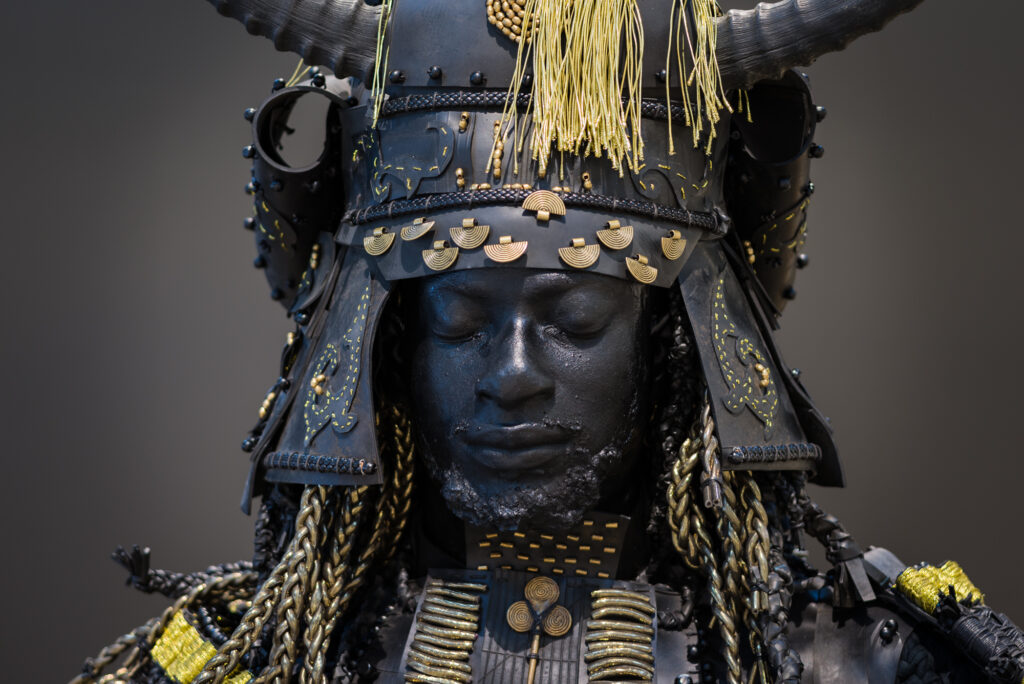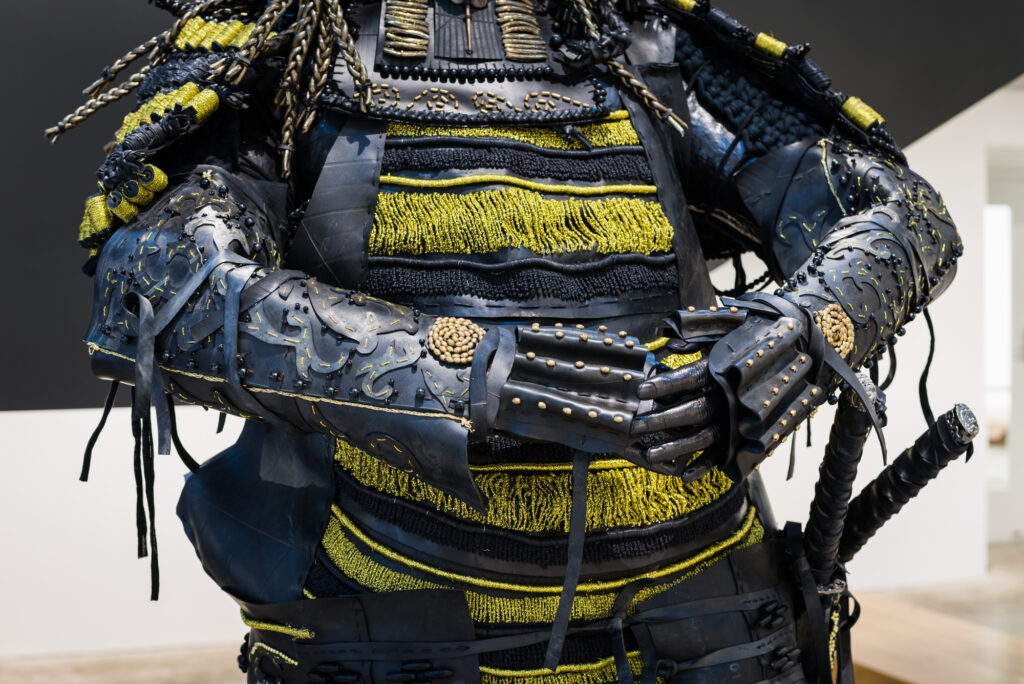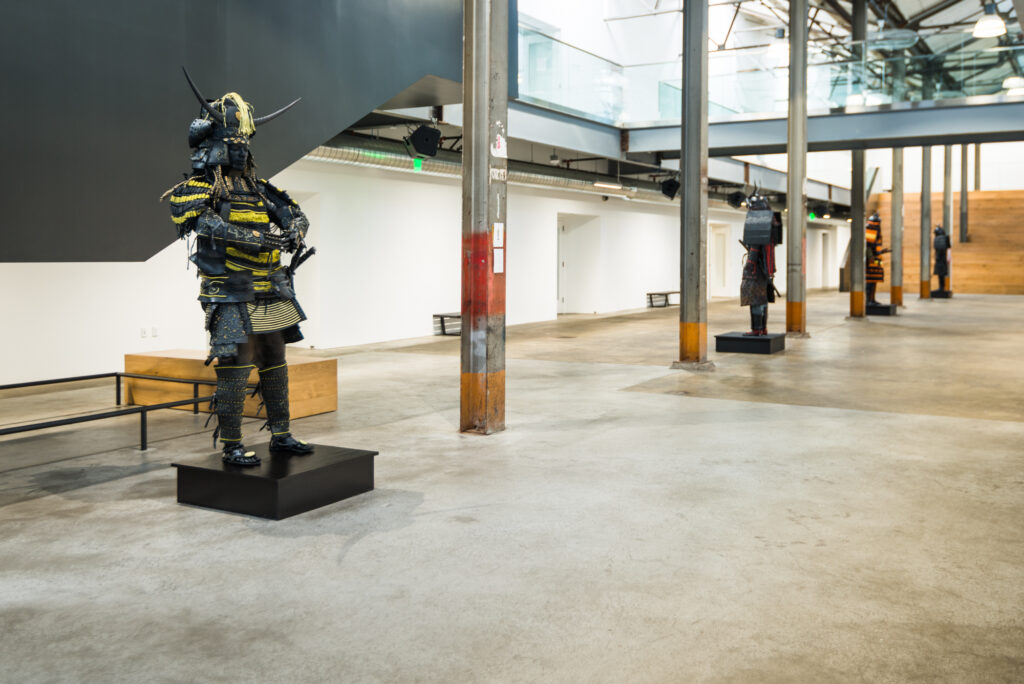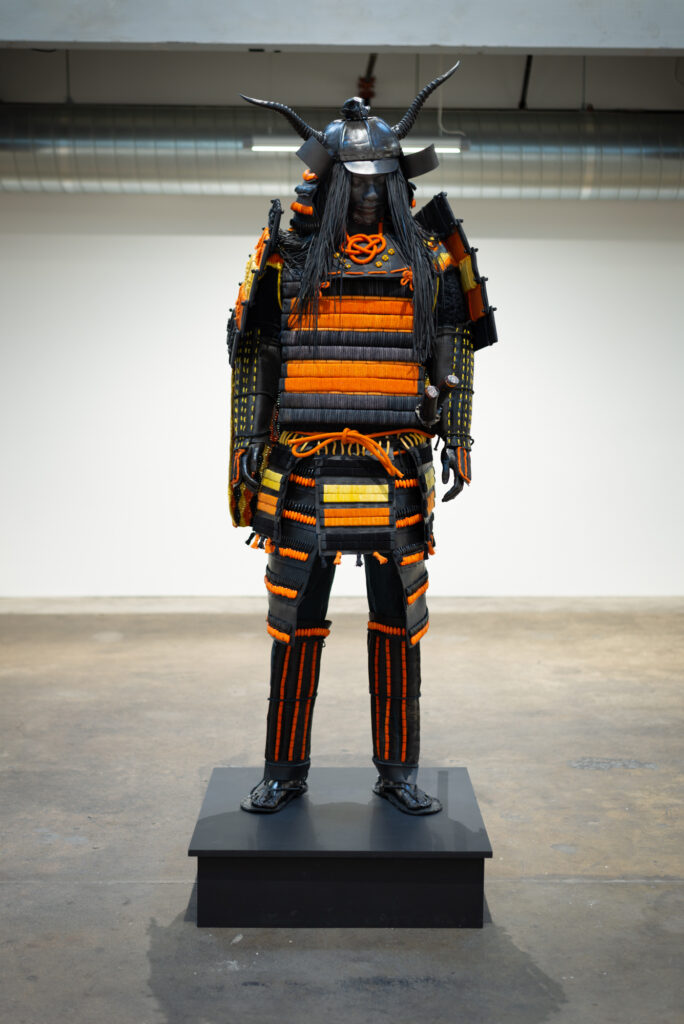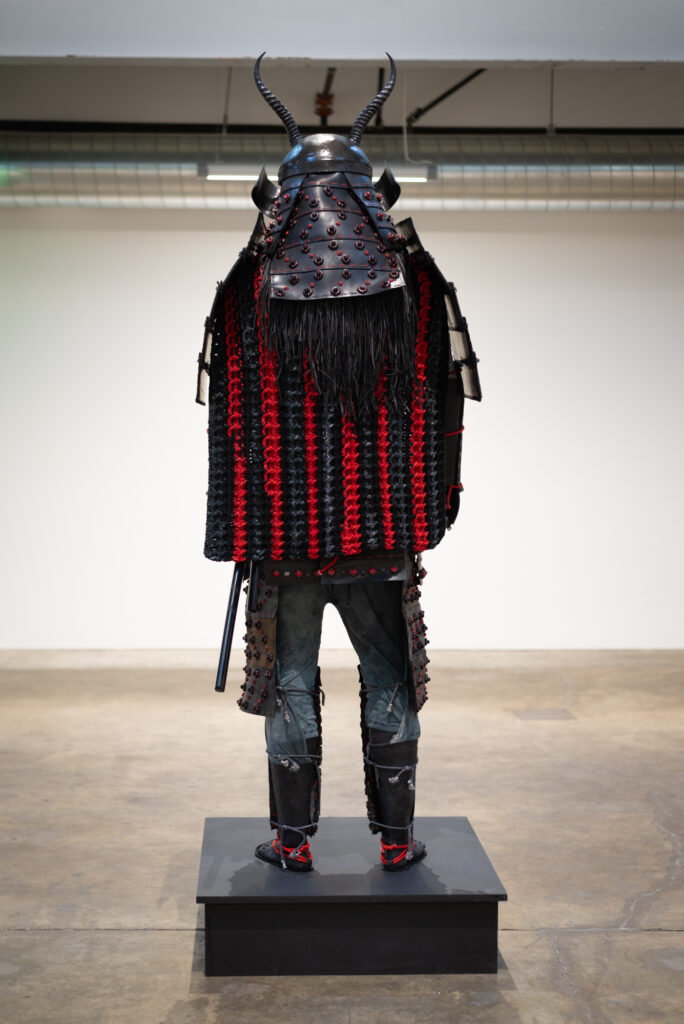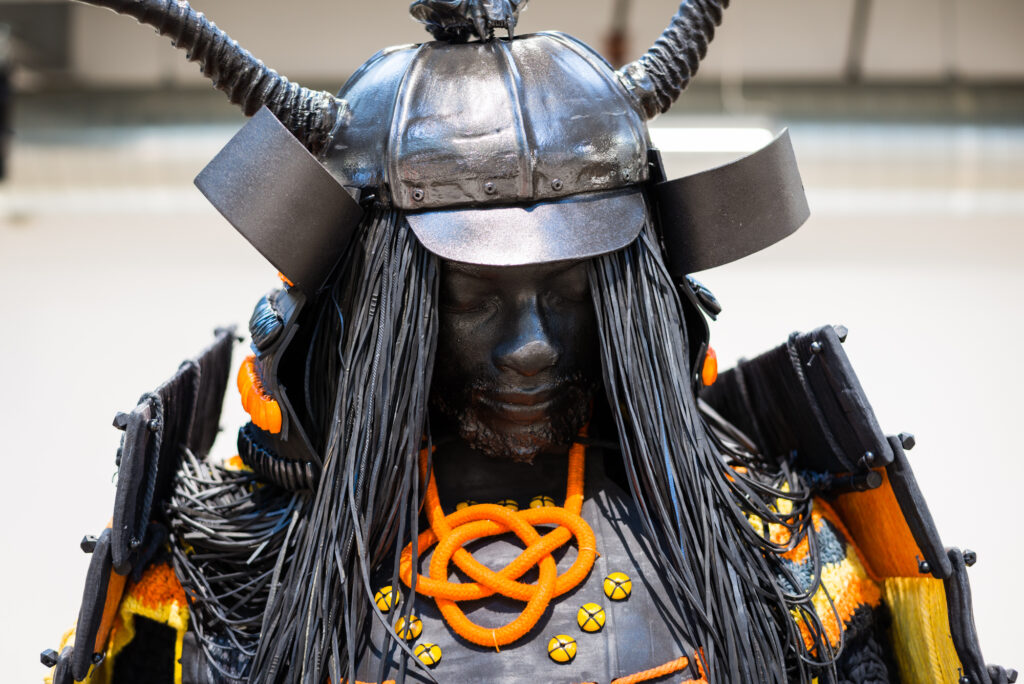
With “Kurobōzu/Dark Stranger,” artist Nicola Roos depicts the real-life figure of Yasuke, “the only Black Samurai in Feudal Japan.” Using recycled tire tubes, textiles, and other materials, the artist crafts four different representations of the historical figure for the show at Ever Gold [Projects] in San Francisco, running through Feb. 29. Roos pulls on the varying threads of Yasuke’s story, though no official recording or portrait of the artist exists. Below, you can see one sumo scene depicting a wrestler some have surmised to be Yasuke.

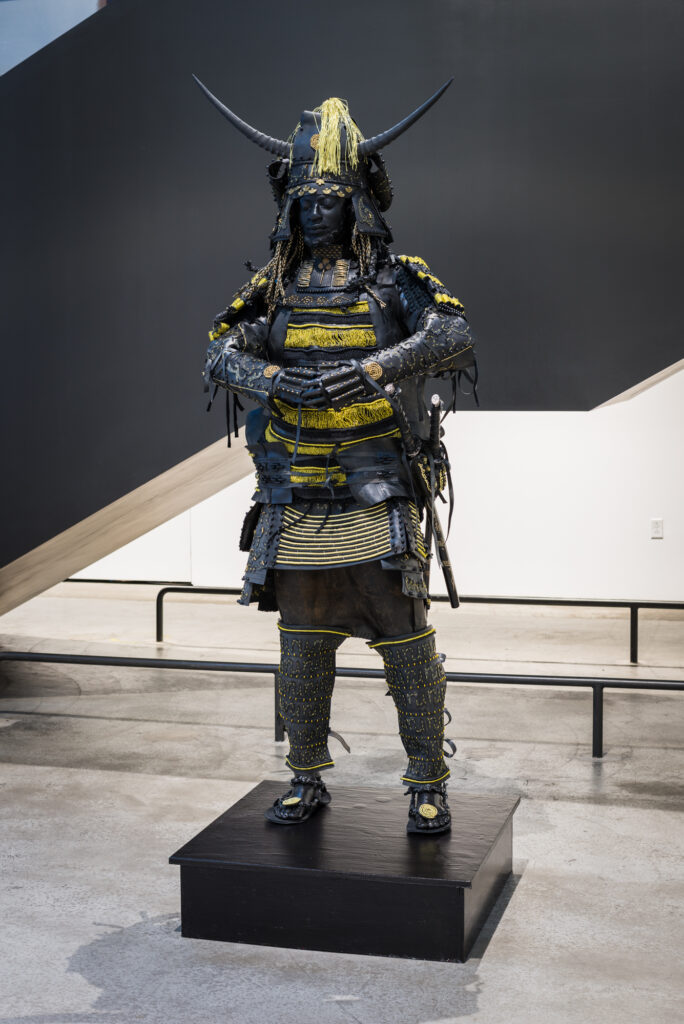
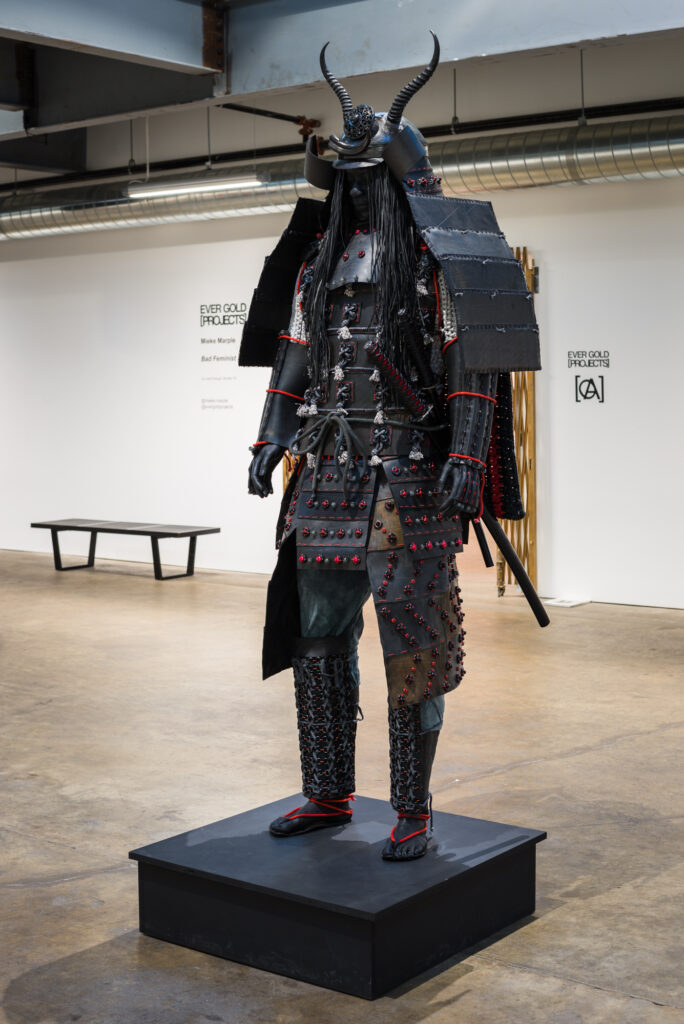
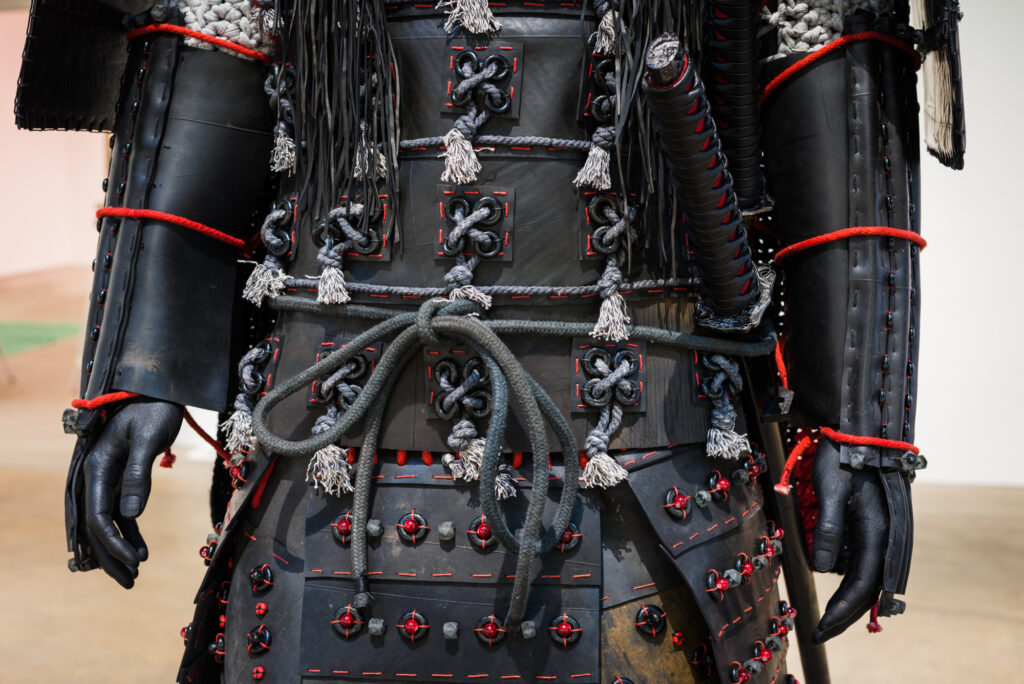
The space offers some more context on Yasuke’s theorized beginnings: “Yasuke was likely from Mozambique: the earliest African people in Japan were supposedly Mozambican, traveling as shipmates or slaves with a Portuguese explorer. Yasuke was Makua (the largest ethnic group in Mozambique), originally called Yasufe and renamed by Sengoku Period Japanese daimyō Oda Nobunaga. Yasuke arrived in Japan with the Italian Jesuit missionary Alessandro Valignano in 1579, and the daimyō took an interest in him, likely because he was the first black man Nobunaga had ever seen. Yasuke served Nobunaga as his personal guard until his death, and joined Nobunaga’s heir in a continued battle against the army responsible for the daimyō’s death. Ultimately captured by this army, Yasuke’s fate is unknown—it is possible that he was taken to the Christian church in Kyoto, though there is no written confirmation of this event.”
See more on the gallery’s site and her own page.
